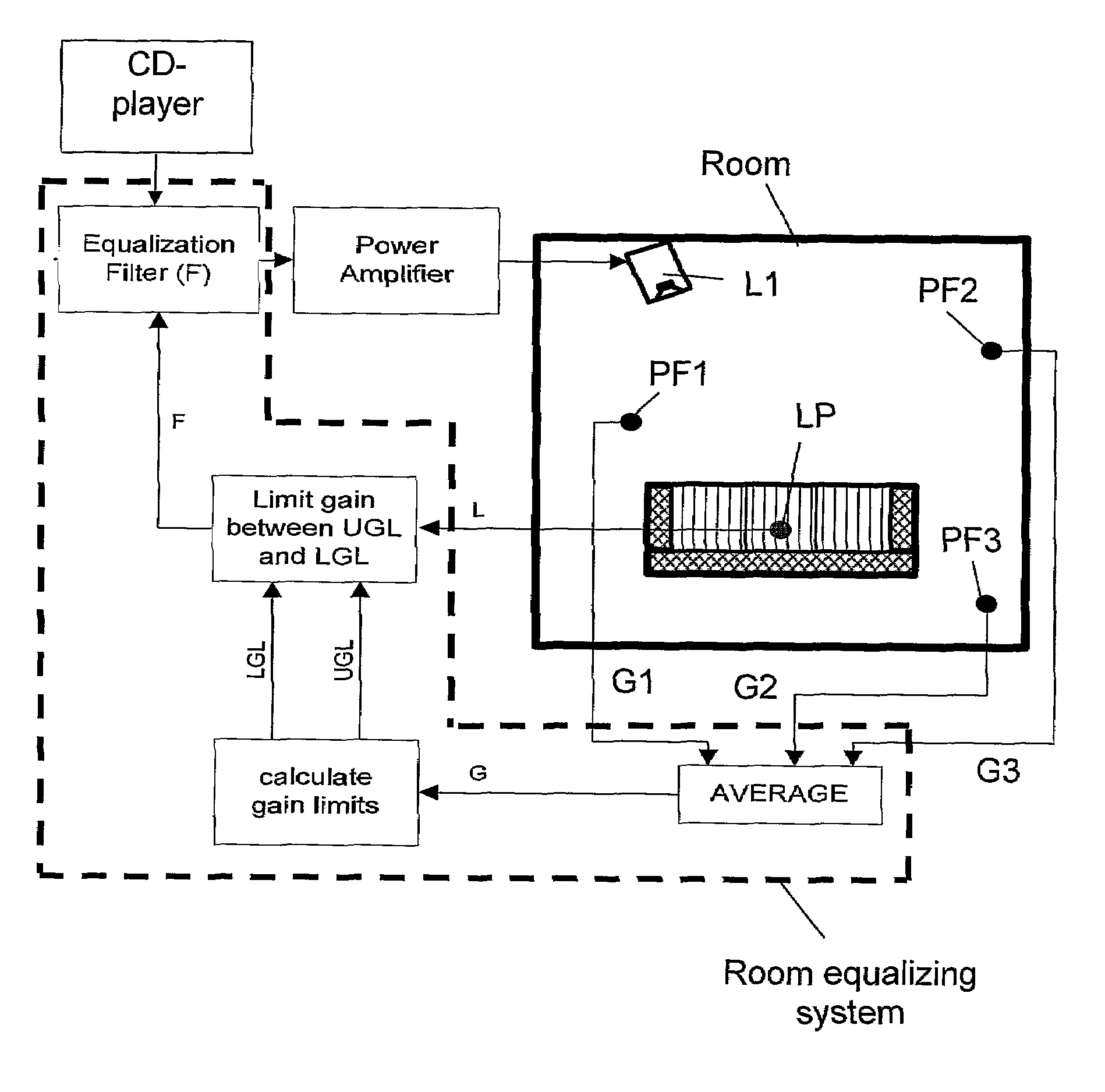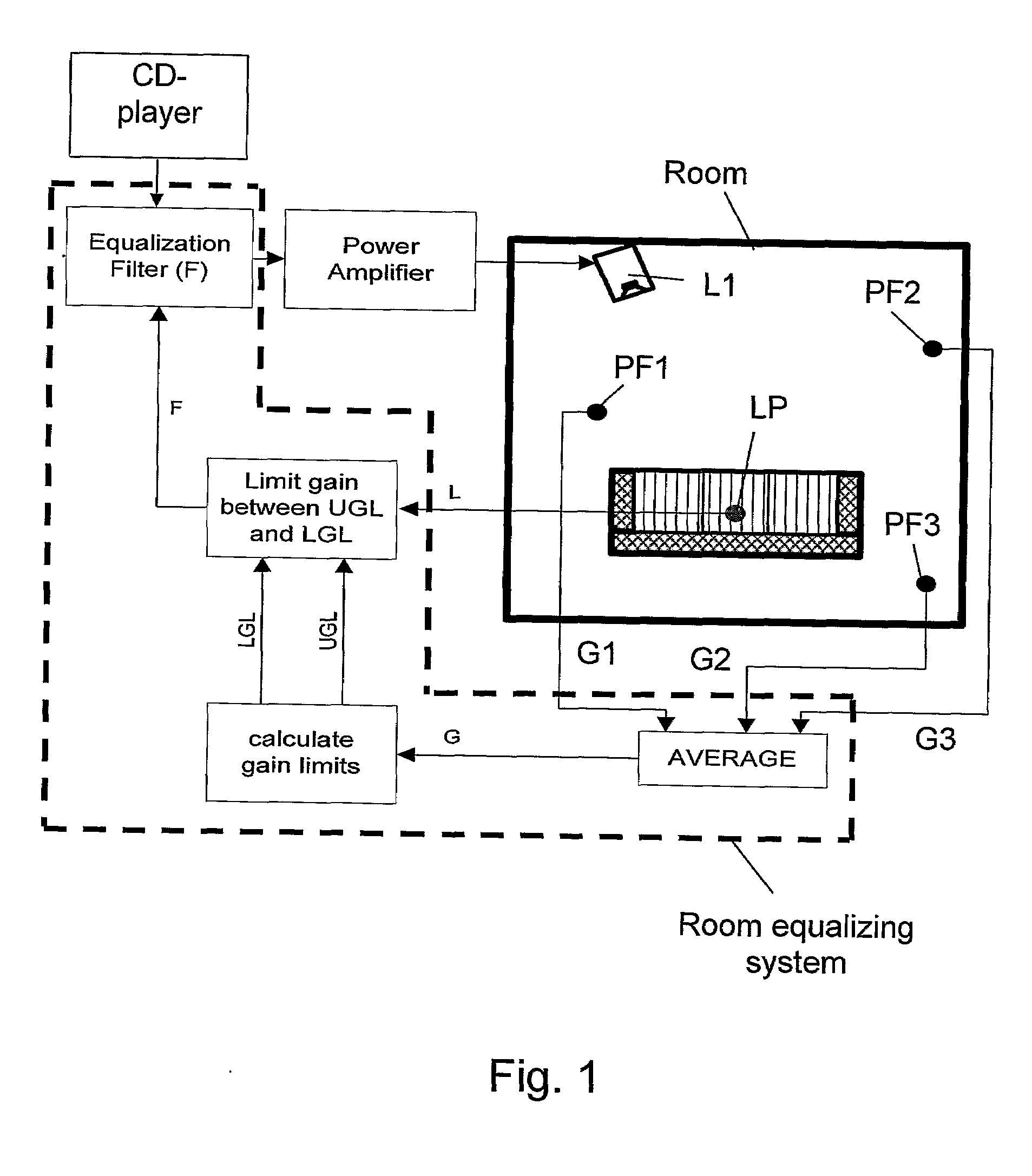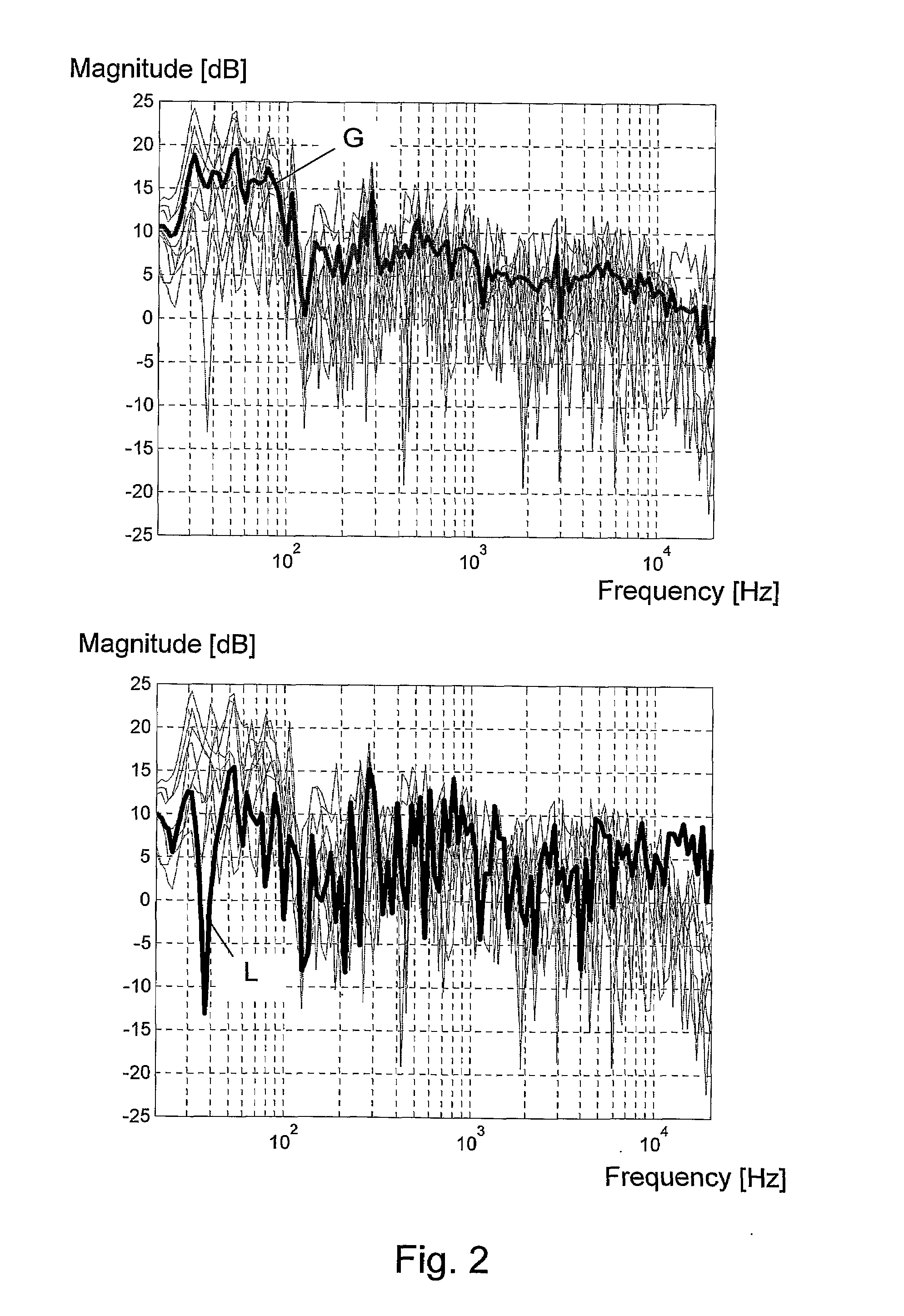Method and system for equalizing a loudspeaker in a room
a loudspeaker and room technology, applied in the field of audio and sound reproduction equipment, can solve the problems of reducing affecting so as to improve the perceived sound quality, improve the sound reproduction quality, and achieve the effect of high probability of a successful resul
- Summary
- Abstract
- Description
- Claims
- Application Information
AI Technical Summary
Benefits of technology
Problems solved by technology
Method used
Image
Examples
Embodiment Construction
[0068]FIG. 1 serves to illustrate basic elements of a preferred embodiment of the invention. A loudspeaker L1 is positioned in a room, e.g. a living room, with a listening position LP. The loudspeaker L1 may be part of a normal hi-fi stereo setup, such as illustrated by the power amplifier and CD-player connected to the loudspeaker L1. As illustrated, an equalizing filter F, i.e. a pre-filter, according to the invention is inserted in the playback chain between signal source (CD-player) and power amplifier with the main purpose of at least partly compensating sound reproduction in the listening position LP for an influence of the room, or rather an influence from the acoustic interaction between loudspeaker L1 and the room.
[0069]As illustrated, inputs to the room equalizing system are: a) a measured transfer in the listening position transfer function L from electrical input of the loudspeaker L1 to a sound pressure at the listening position, and b) a global transfer function G repr...
PUM
 Login to View More
Login to View More Abstract
Description
Claims
Application Information
 Login to View More
Login to View More - R&D
- Intellectual Property
- Life Sciences
- Materials
- Tech Scout
- Unparalleled Data Quality
- Higher Quality Content
- 60% Fewer Hallucinations
Browse by: Latest US Patents, China's latest patents, Technical Efficacy Thesaurus, Application Domain, Technology Topic, Popular Technical Reports.
© 2025 PatSnap. All rights reserved.Legal|Privacy policy|Modern Slavery Act Transparency Statement|Sitemap|About US| Contact US: help@patsnap.com



